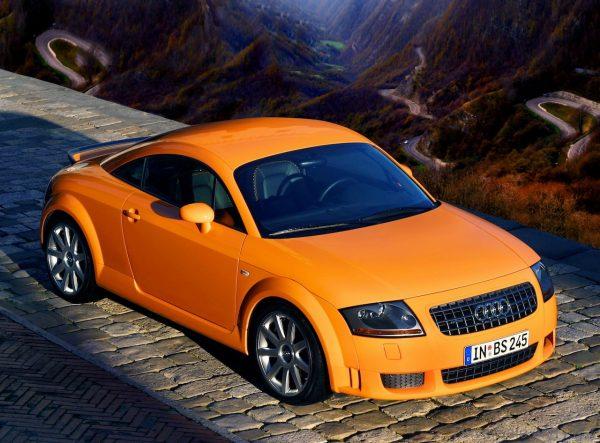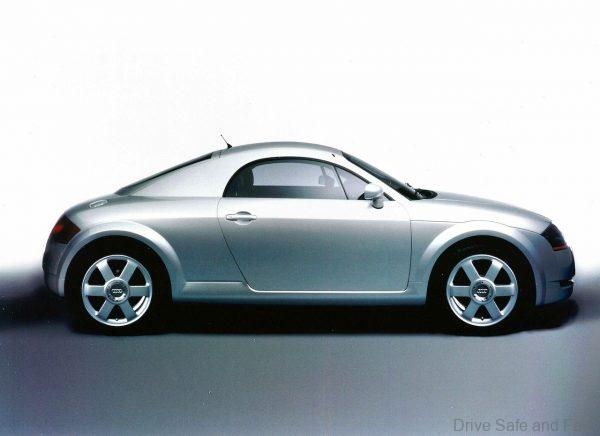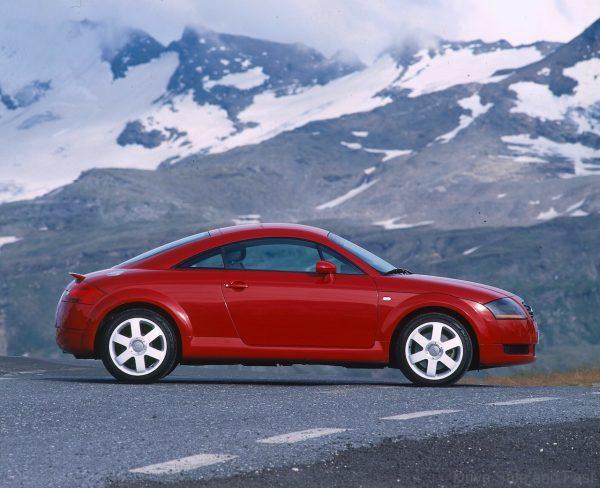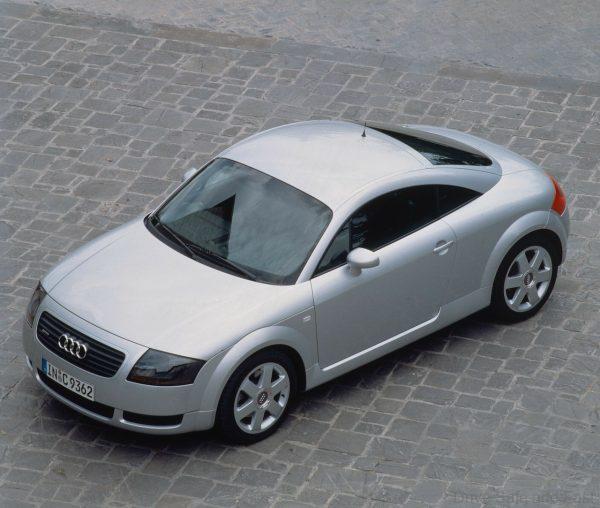The Audi TT Coupé is 25 years old this year and won’t see a direct ICE-powered successor.
In the mid-1990s, the Audi brand was undergoing a significant revamp with a higher position in the luxury ladder, expanding portfolio and a new naming structure. In the course of emotionalizing the brand through a fresh, progressive design, American designer Freeman Thomas, under the then Head of Design Peter Schreyer, created a puristic sports car in the Audi TT Coupé. Audi presented the study to an enthusiastic trade show audience at the IAA in Frankfurt in September 1995.

The model name “TT” is reminiscent of the legendary Tourist Trophy on the Isle of Man, one of the oldest motorsports events in the world and one where NSU and DKW celebrated great successes with their motorcycles. The name “TT” also recalls the sporty NSU TT of the 1960s. The Audi TT Coupé’s deliberate departure from the usual Audi nomenclature underscored the complete novelty of the model.

The Audi TT Coupé’s unique design and character are the result of the brand’s philosophy of “less is more,” reducing the car to the essentials. Designer Torsten Wenzel explains, “In the Audi TT, every shape has a clear function.” Every line in the car has a purpose, and every shape contributes to its function. The Audi TT Coupé is a driving sculpture with highest-quality surfaces and lines.

In December 1995, the decision was made to mass-produce the Audi TT Coupé. Most noticeable was the integration of a rear side window, which elongated the car’s profile and increased the sports car’s dynamics.

From the outset, the TT was produced by Audi Hungaria Motor Kft. in Hungary. Audi Hungaria, a wholly owned subsidiary of AUDI AG, is also celebrating its 30th anniversary in 2023.

The range of engines in the first-generation Audi TT was broad and naturally always sporty. The first-generation TT came with four-cylinder turbo engines with a power spectrum from 150 to 225 PS and a V6 unit with 250 PS. A highlight of the engine range was the four-cylinder in the Audi TT quattro Sport, which was boosted to 240 PS, and 1,168 units were delivered.

The second-generation TT was launched in 2006 (Coupé) and 2007 (Roadster). In the following two generations, the designers held to “reduction to the essentials” as the dominant design principle, which is made evident in the minimalist design of the exterior and the sleek, driver-oriented interior.

The round shape and the circular motif remained typical of the TT portfolio and were unifying elements in the exterior and interior design.

Over 25 years, the Audi TT Coupé has remained a unique offering in the segment with no direct rivals from BMW or Mercedes-Benz. Despite this, the TT must evolve with the times and it is likely that no 4th generation will arrive – at least not in the petrol-powered form many have come to love. Instead, it may be reimagined as an electric 2-door compact performance SUV or something along those lines.


